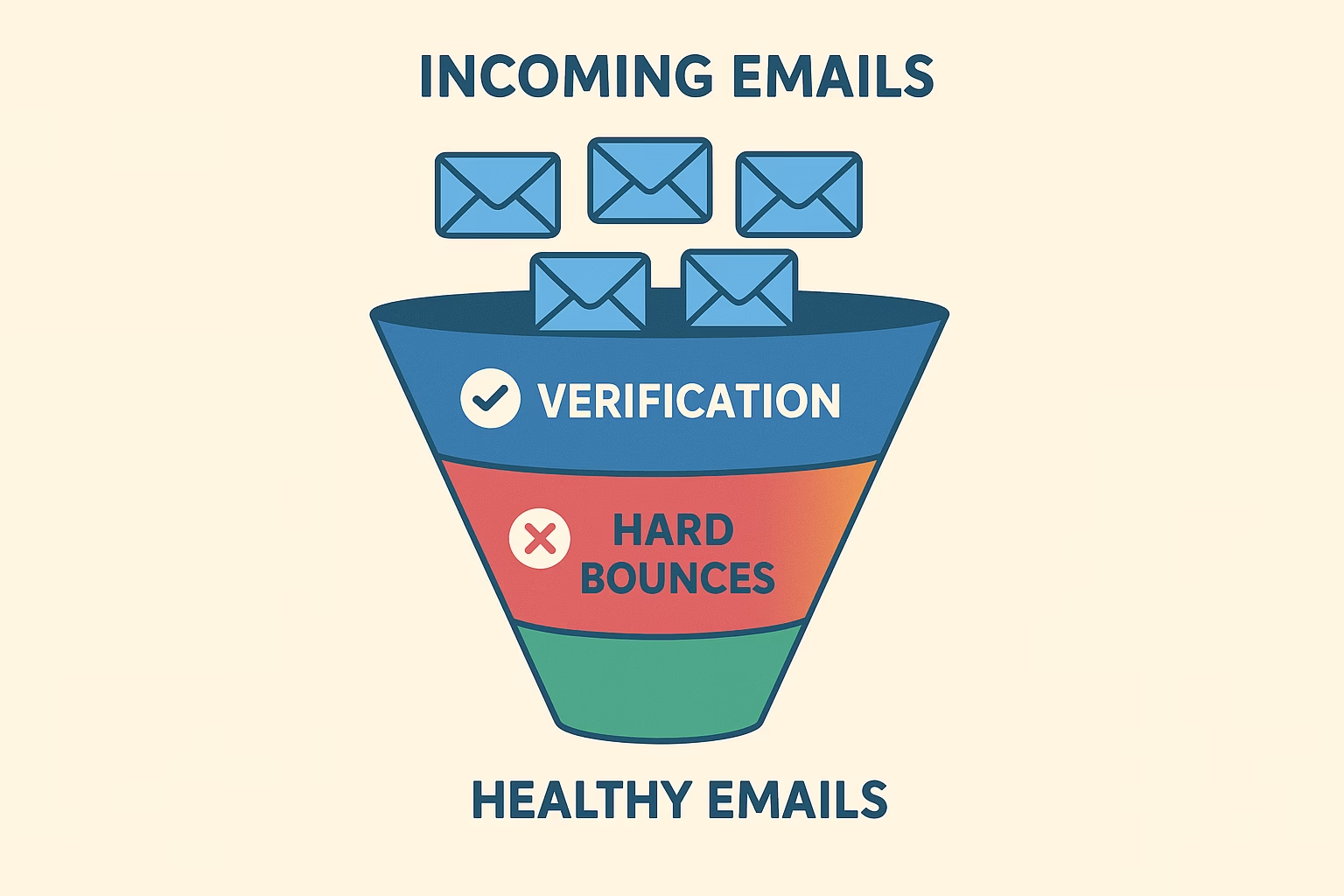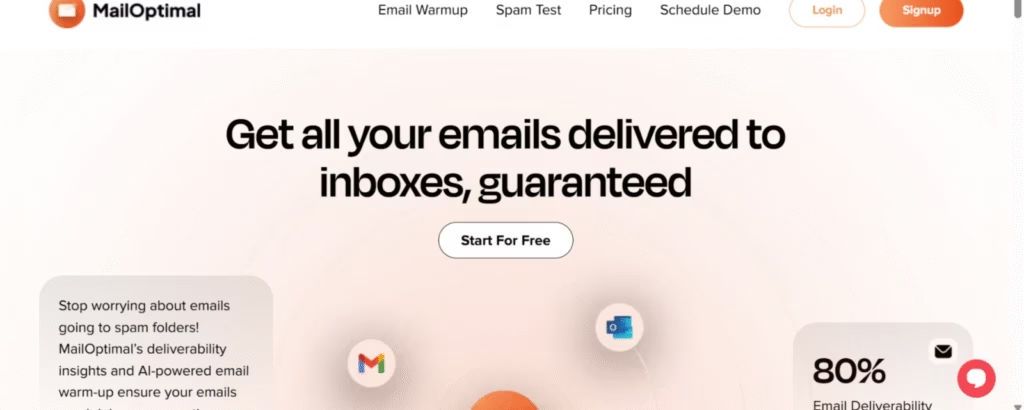Email Bounces: Email marketing enables brands to reach their target audience and expand their business effectively. But a big challenge marketers face is email bounces—when emails don’t get to the recipient’s inbox. Knowing the difference between hard and soft email bounces is key to keeping your list healthy, protecting your sender reputation, and improving deliverability. This guide explains what hard and soft bounces are, why they matter, and how tools like MailOptimal help manage them in 2025.
What Are Email Bounces?
An email bounce happens when an email is rejected by the recipient’s mail server and sent back undelivered. There are two types:
- Hard Bounce: A permanent failure, meaning the email cannot be delivered to that address.
- Soft Bounce: A temporary failure, meaning the email reached the server but was rejected due to a temporary issue.
Both kinds harm your email campaigns if not addressed, but have different causes and solutions.
What Is a Hard Bounce?
A hard bounce means your email was permanently rejected. This happens if:
- The email address doesn’t exist or is misspelled.
- The domain name has expired or doesn’t exist.
- Your sender address or IP is blocked.
- The mailbox was deleted or closed.
A hard bounce means the message will never be delivered. Sending to these addresses hurts your sender reputation and raises spam risks. Best practice is to remove hard bounce addresses from your list immediately.
What Is a Soft Bounce?
A soft bounce is a temporary issue. Your email reached the recipient’s server but got rejected for reasons like:
- The mailbox is full.
- The server is down or busy.
- Attachments are too large.
- Email content is flagged by spam filters.
Soft bounces are retried by servers for 1 to 3 days. If delivery eventually works, the email goes through. If retries fail, a soft bounce can turn into a hard bounce. Track soft bounces carefully and remove persistent addresses to keep your list healthy.

Why Bounces Matter for Marketers
Bounces affect more than failed deliveries—they impact your sender reputation and deliverability. High bounce rates tell Internet Service Providers (ISPs) you may have a poor-quality list or bad sending habits. This can cause:
- Emails landing in spam or promotions instead of inboxes.
- Lower open and click rates.
- Risk of blacklisting and blocked IPs.
Aim to keep bounce rates under 2% to maintain good inbox placement and campaign success.
How MailOptimal Helps Manage Bounces
MailOptimal offers tools to tackle bounce problems quickly:
- Real-time Bounce Monitoring: Spot hard vs soft bounces immediately.
- Automated List Cleaning: Remove invalid emails to keep lists fresh.
- Email Warmup: Gradually build domain reputation to lower soft bounce risk.
- Detailed Analytics: See bounce trends and engagement metrics.
- Actionable Advice: Get tips on reducing bounces and boosting results.
Using MailOptimal helps marketers reduce bounce rates, improve deliverability, and grow email marketing ROI.
Frequently Asked Questions (FAQs): Email Bounces
Q1: Can soft bounces become hard bounces?
Yes. If soft bounces happen repeatedly, they often turn into hard bounces, indicating permanent delivery failure.
Q2: Should I remove soft bounce emails?
Track how often they bounce. Remove emails that soft bounce multiple times to protect your sender reputation.
Q3: What is an acceptable bounce rate?
Bounce rates below 2% are healthy. Higher rates risk deliverability and reputation issues.
Q4: How does bounce impact sender reputation?
Consistent hard bounces show ISPs you have invalid addresses, increasing spam filtering and blocking risks.
Q5: How do I prevent bounces?
Use double opt-in, clean lists often, warm up new domains with MailOptimal, and follow best sending practices.

Understanding the difference between hard and soft email bounces is crucial to protect your sender reputation and maximize your email results. Monitoring and acting on bounces with tools like MailOptimal ensures higher deliverability, better engagement, and email marketing success in 2025 and beyond.
Email Deliverability Tools: Top 8 Email Deliverability Tools to Land Your Emails in the Inbox

